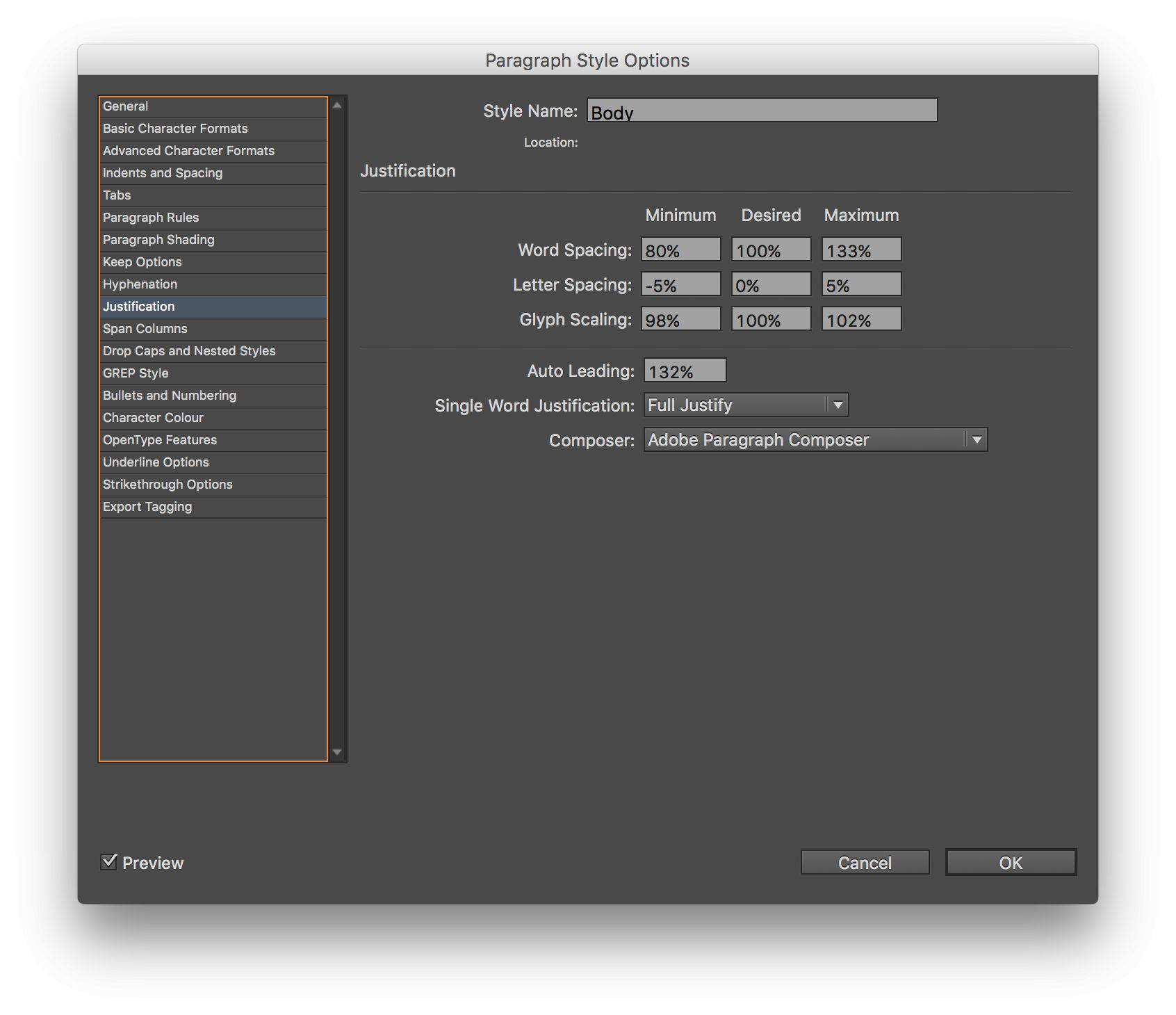

As you type or edit a paragraph, InDesign adjusts the line breaks a paragraph at a time, which explains why you may notice text reflowing above the line you are editing.īe sure to click on preview to see how your type is looking. This changes how InDesign handles composition. However these are still the starting place since it depends on the typeface.Ĭomposer (Type & Tables > Paragraph Palette > Justification) The defaults in InDesign are too generous for my taste, so I have my own that perform better. These settings automatically adjust the overall spacing between letters and words. Word & Letter Spacing (Type & Tables > Paragraph Palette > Justification) My preferred range is within 98% and 102%, so slight the human eye can hardly detect. Newspaper printers sometimes had a slightly narrower set of type and slightly wider set of type in order to fit more content where needed. This range allows a little flexibility in the way the glyphs proportionally scale. In body copy sizes, a quality font will cover the kerning necessities.Glyph Scaling (Type & Tables > Paragraph Palette > Justification) Unkerned type looks cheap and unprofessional. We are always expected to check the kerning on all type larger than about 18-point: Yes, you really are required to hand kern all headlines if necessary. Needless to say, I had to take it off the market until I fixed it. I had forgotten that I had purposely made uneven and bad letterspacing in the font used for headers in my first book on InDesign to show how well optical kerning worked. Some years ago, I put a font up on to sell that was unusable outside of InDesign. InDesign offers Optical kerning which automatically checks the letterspacing and adjusts it for you. Adding the Command key multiples the amount moved. InDesign give you keyboard shortcuts (most often Option+Left Arrow and Option+Right Arrow).
#Change letterspace indesign professional#
In addition, all professional publishing programs allow you to adjust kerning for individual pairs. Cheap fonts commonly have a couple dozen or none at all.Īs mentioned, quality fonts have kerning designed into about a thousand letter pairs. Professional fonts have around 1,000 kerning pairs built into the font metrics-or more. Here again we see the difference between excellent and cheap fonts. Most of them can only be seen at the larger point sizes. Literally thousands of different kerned pairs are needed to make a well kerned font. There is no way to set up the spacing around letters to cover all situations: AR is a very different situation than AV To than Th AT than AW. I guess the total would be around 100,000 pairs for a complex OpenType font with hundreds of characters. There are thousands of different letter pairs. The purists will squeal, but the readers will probably not notice.

Here you want to move the letters closer. The same is true when using a text font for heads. In this case you may want to increase the tracking, globally, for the entire document. Global tracking changes: If you are using a display font for your body copy, it will commonly be set too tight. Tight tracking severely compromises readability by obscuring lettershapes. In the 1980s, it was very common to see extremely tight tracking in everything. Tracking suffers from the vagaries of fashion. At worst, it can make the type color of the page look splotchy. A paragraph tracked tighter looks darker.

Changing the tracking for stylistic reasons or fashion changes the color of the type at the very least. Quality typefaces have the letterspacing carefully designed into the font. The actual procedure for tracking simply inserts or removes an equal amount of space around every letter selected or affected.Īlthough tracking is used all the time by typographic novices, it is despicable to traditional professionals. In reality, either term can be used and understood. Tracking is the official term used to replace letterspacing in digital typesetting now that we can move letters either closer together or farther apart. I bought a font once where the lowercase r was always at least 9 points to the left. In very cheap fonts, individual letters may be far to the left or right. The better the font, the better the letterspacing. AT, OOPS, and silly have very different spacing problems-especially the ill.

The basic idea is that the white space between letters should be identical for all letter pairs. Letterspacing is the built-in spacing between characters in a font. Here is another typesetting capability that cannot even be considered by word processors.


 0 kommentar(er)
0 kommentar(er)
